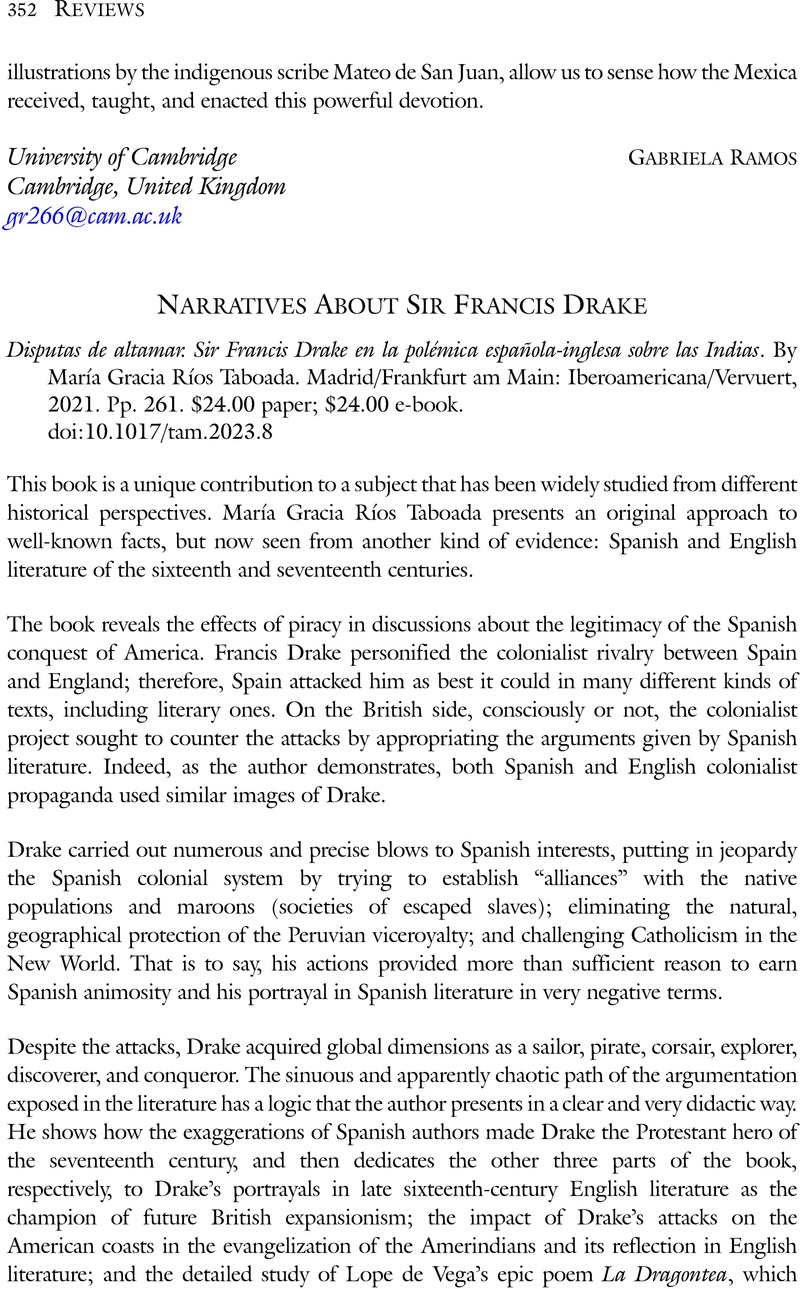No CrossRef data available.
Article contents
Narratives About Sir Francis Drake - Disputas de altamar. Sir Francis Drake en la polémica española-inglesa sobre las Indias. By María Gracia Ríos Taboada. Madrid/Frankfurt am Main: Iberoamericana/Vervuert, 2021. Pp. 261. $24.00 paper; $24.00 e-book.
Review products
Disputas de altamar. Sir Francis Drake en la polémica española-inglesa sobre las Indias. By María Gracia Ríos Taboada. Madrid/Frankfurt am Main: Iberoamericana/Vervuert, 2021. Pp. 261. $24.00 paper; $24.00 e-book.
Published online by Cambridge University Press: 20 April 2023
Abstract
An abstract is not available for this content so a preview has been provided. Please use the Get access link above for information on how to access this content.

- Type
- Book Review
- Information
- Copyright
- Copyright © The Author(s), 2023. Published by Cambridge University Press on behalf of Academy of American Franciscan History


